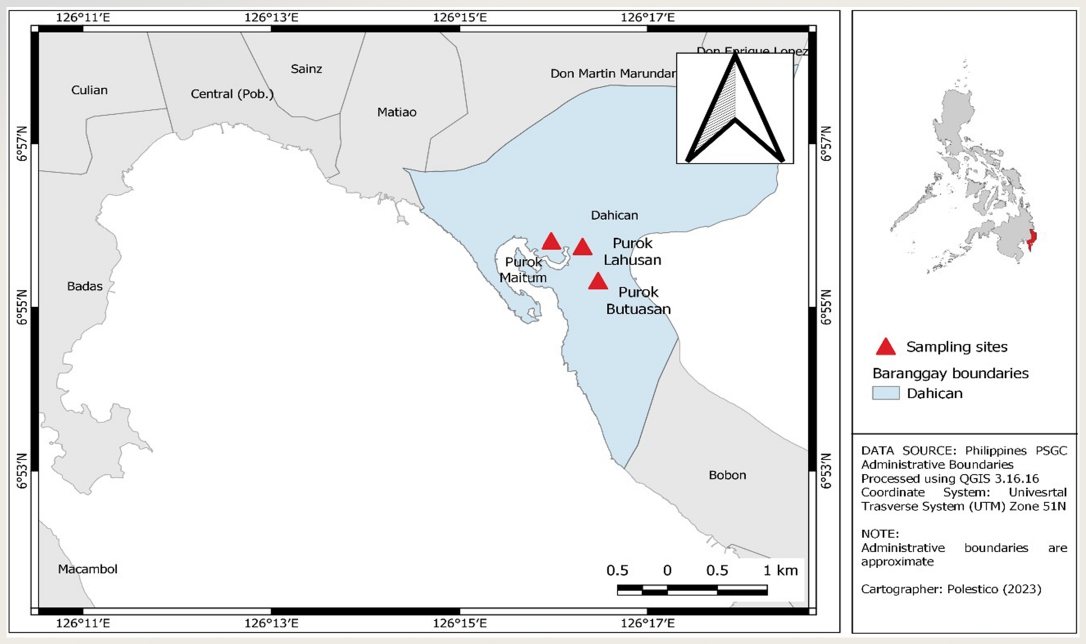Evaluation of shrimp-associated species in abandoned ponds in Mati City, Philippines
DOI:
https://doi.org/10.59120/drj.v15iNo.2.193Keywords:
Aquaculture ponds, bycatch species, invasive species, Mati City, shrimp pondsAbstract
This study aimed to identify, characterize, and evaluate the biodiversity of shrimp-associated species in abandoned shrimp ponds, specifically assessing the trophic levels of bycatch species in Barangay Dahican, Mati City. Using a scoop net, researchers collected macrobenthic samples from Maitum, Lahusan, and Butuasan, finding 1,528 individuals with varying species compositions namely: Oreochromis niloticus (Nile tilapia), Coenobita cavipes (Land hermit crab), Canarium labiatum (Plicate conch), Rochia nilotica (Commercial top), Clithon oualaniense (Guamanian nerite), Cerithium coralium (Coral cerith), and Callinectes sapidus (Blue crab). Cerithium coralium was the most abundant species with 70% relative abundance, followed by Clithon oualaniense, with 29%. In contrast, the least abundant species were the Oreochromis niloticus and Canarium labiatum, with 1% relative abundance. Moreover, biodiversity indices revealed that Lahusan 1 (H' = 0.731; D=0.46) and Butuasan (H' = 0.714; D = 0.5) had higher biodiversity, whereas Lahusan 2 had the lowest (H' = 0.318; D = 0.15). In addition, there were also significant differences in terms of species abundance (df = 6, MS = 34.18, F = 6.02, P = 0.000) and none in terms of site locations (df = 3, MS = 18.71, F=2.08, P= 0.188). The study results showed that these associated species were mainly benthic and came from the nearby environment. Providing good management for the abandoned shrimp ponds in the area could mean reverting them to their original state to provide a habitat for other organisms.
Downloads

Downloads
Published
Issue
Section
License
Copyright (c) 2024 Jason C. Pilotos, Yam Nesa B. Bualan

This work is licensed under a Creative Commons Attribution-NonCommercial 4.0 International License.
DRJ is an open-access journal and the article's license is CC-BY-NC. This license allows others to distribute, remix, tweak, and build on the author's work, as long as they give credit to the original work. Authors retain the copyright and grant the journal/publisher non-exclusive publishing rights with the work simultaneously licensed under a https://creativecommons.org/licenses/by-nc/4.0/.









